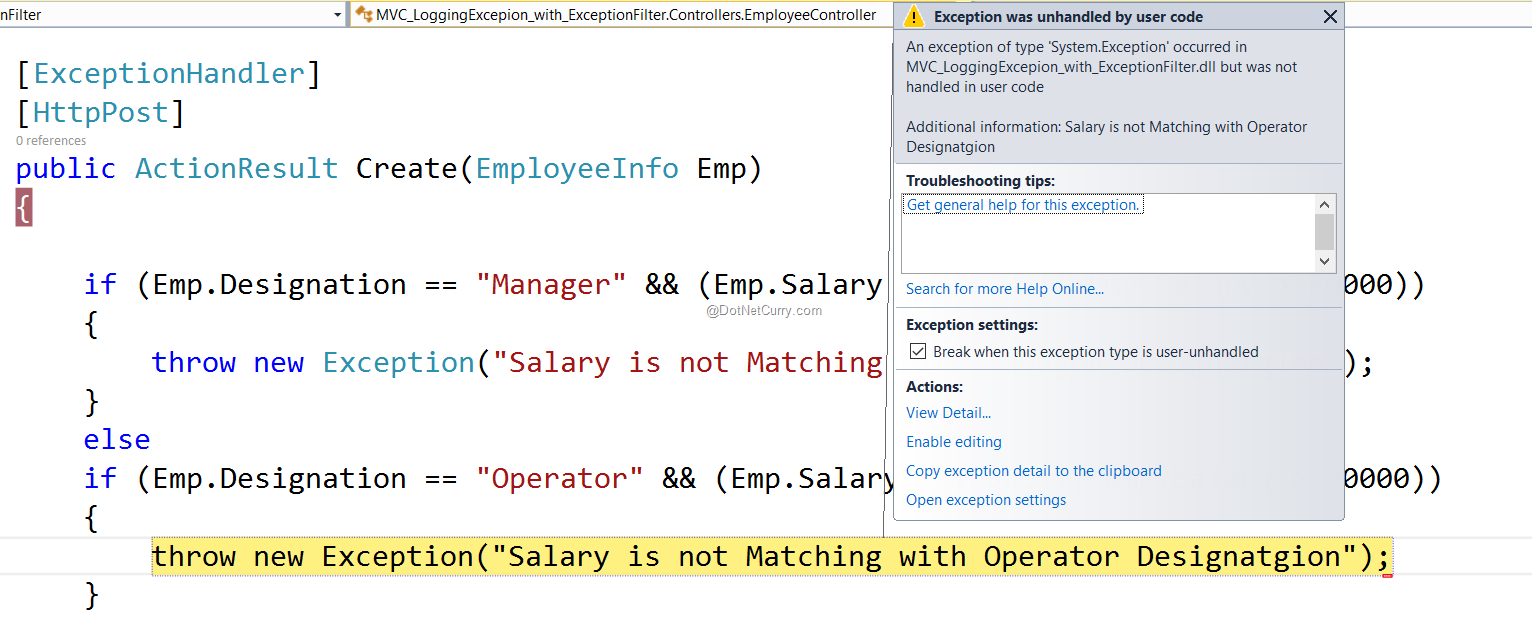Asp.net Write Exception To Log File
The following example shows the Web.config file. The customErrors section specifies how to handle errors that occur with file types that are mapped to ASP.NET, such as.aspx,.asmx, and.ashx files. (In IIS 6.0 and in IIS 7.0 in classic mode, static content files such as.html and.jpg files are not mapped to ASP.NET.) The settings in the example customErrors section cause any unhandled HTTP 404 (file not found) errors to be directed to the Http404ErrorPage.aspx file. These HTTP 404 errors would occur if a request were made for an.aspx file,.asmx file, and so on and if the requested file did not exist.
All other unhandled errors in ASP.NET files are directed to the DefaultRedirectErrorPage.aspx file. If static content files are not handled by ASP.NET, a request for a nonexistent.html or.jpg file does not cause a redirect to the Http404ErrorPage.aspx file. If you want ASP.NET to handle requests for all file types, you can configure IIS to map file-name extensions to ASP.NET. The following example shows the ExceptionUtility file.

Joomla Cannot Write To Log File

Error logs might be directed to the computer's ErrorLog file, or, if the computer is part of a Web farm, the error log might be recorded in a globally available text file, or even a database. You might also need to immediately notify system administrators of a problem. The ExceptionUtility class in the example has two static methods: one to log the exception, and one to notify system administrators. How those methods are implemented in your code depends on the needs of your organization.
Log Error or exception in a Text File is simple in.NET. Logically its something writing in a text file and we know that.NET provides few classes to. How to write log file in c#? Ask Question. Up vote 21 down vote favorite. How would I write a log file in c#? How to Log Exception in a file?
For this example, you must grant write permissions to the ASP.NET worker process account (by default, this is NETWORK SERVICE) for the AppData folder to enable the application to write to the error log. The following example shows the Default.aspx page. This file provides several buttons, each of which raises a different exception. The PageError handler on the page displays an error page and logs some of these errors. Unhandled errors are passed to the ApplicationError handler in the Global.asax file. The ApplicationError handler displays an error page and logs some of the remaining errors.
Power Shell Write To Log File
Any errors that are still not handled are directed to the page indicated by the customErrors section of Web.config file.